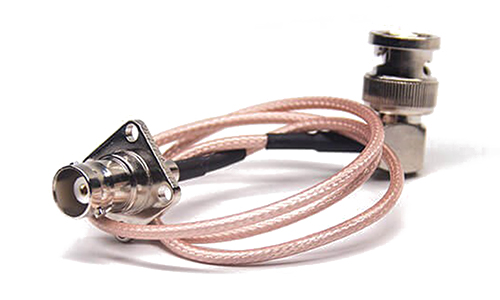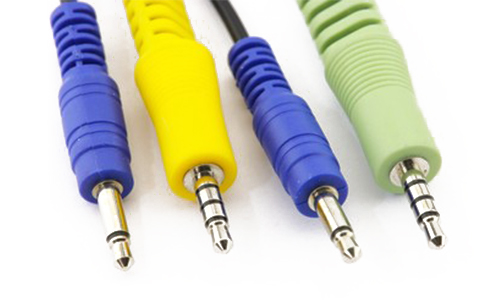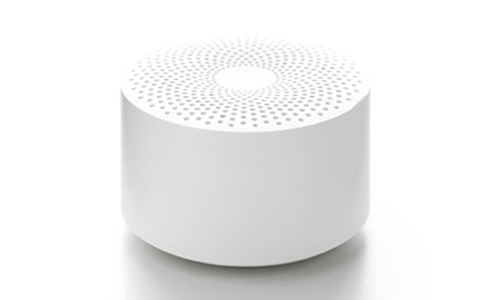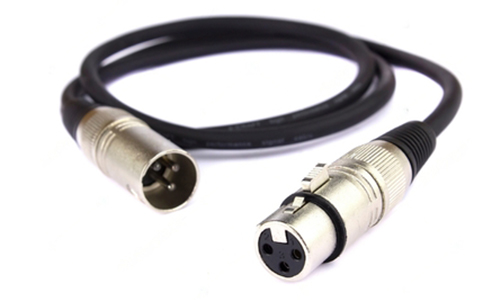When we use the speaker, often the first thing to face is to connect the line, in addition to the power cord we are more familiar with, the rest of a bunch of dense variety of audio interfaces, some people may not know how to wire. These interfaces are not only different functions, more headaches is that some of them are different functions, but the same appearance, which has caused a lot of users a lot of trouble. This time we will introduce you to some common audio interfaces.
RCA
The RCA connector is very common in our daily lives and is easily seen on devices such as TVs and DVD players, in addition to speakers. Its name comes from the acronym of the Radio Corporation of America, which introduced this interface to the market in the 1940s and used it to connect phonographs and speakers.The RCA interface uses coaxial transmission of signals, with the center shaft used to transmit signals and a ring of contact layers along the outer edge used for grounding. Each RCA cable is responsible for transmitting one channel of audio signal, so you can use as many RCA cables as you actually need for the channels. For example, dual-channel stereo requires two RCA cables, which also caused the RAC interface connection complex criticism, so now in some Bluetooth speakers, the RAC interface is gradually disappearing from people’s view.

TOSLINK
TOSLINK comes from a technical standard developed by TOSHIBA and is generally labeled as “Optical” on devices. There are two types of physical interfaces, a standard square connector and a round connector similar to the 3.5mm TRS connector commonly found on portable devices. Since it transmits digital signals in the form of optical pulses, it is the fastest in terms of transmission speed from a technical point of view alone. Since it transmits digital signals in the form of light pulses, it is the fastest transmission speed in terms of efficiency. TOSLINK is more advanced than RCA transmission method and supports high quality music transmission.
Additionally, TOSLINK supports 5.1 channels, enabling a single cable to connect to a 5.1 sound card or audio device for improved sound quality. TOSLINK and coaxial connectors are commonly used to connect a TV in the home to compensate for the lack of volume and sound quality on the TV.
Coaxial
Sony and Philips jointly developed the Coaxial audio interfaces (Coaxial) standard for SPDIF (Sony / Philips Digital InterFace), which is indicated by the Coaxial logo on the back panel of the speaker. The digital coaxial interface utilizes a coaxial cable with a 75Ω impedance as the transmission medium, providing constant transmission impedance and high transmission bandwidth to ensure audio quality. The signal is transmitted through RCA or BNC connectors. It is important to note that although the RCA coaxial connector shares the same appearance as the RCA analog connector, it is advisable not to mix the cables, as the RCA coaxial cable has a fixed 75 ohm impedance. Mixing the cables can lead to unstable sound transmission and a degradation in sound quality.

AUX
An AUX audio interfaces, also known as auxiliary audio interfaces, is a connection point that allows external audio devices to be connected to the main audio system. This interface is commonly found in car stereos, home audio systems, and portable speakers. Typically, it consists of a 3.5 mm stereo jack or a set of RCA inputs that allow devices such as smartphones, MP3 players, and other audio sources to be played through the main audio system connection.The AUX audio interface provides a convenient way to enhance the audio capabilities of a system by integrating an external audio source.

Bluetooth
Although the “interface” of Bluetooth is invisible, the transmitting and receiving modules are hidden in the device. It’s still an important connection method for many speakers nowadays, so let’s talk about it here. I believe many people have doubts about the sound quality of Bluetooth speakers. After all, there is some loss in sound signals through wireless transmission. However, now many manufacturers are putting a lot of effort into solving this problem, and many products have already performed excellently in this respect, approaching the level of HiFi. In fact, as early as the Bluetooth 2.0/2.1 era, the transmission rate of Bluetooth had reached 2.1 Mbps, which was sufficient for high-quality audio transmission.

Now, in the Bluetooth 4.0 era, combined with the application of decoding technologies such as SBC, AAC, and apt-X/aptX, when playing audio in formats like flac, WAV, ACC, it can basically achieve lossless transmission. Although it cannot achieve true “CD-level sound quality,” it is already difficult to distinguish from weird connections.
XLR
Cannon Electric Company, founded by James H. Cannon, invented the XLR interface. The original product was the “Cannon X” series, but later improvements added a latch, so an “L” was added to the “X”; Later, a rubber compound was added around the metal contact of the fitting, so another “R” was added after the “L”. People combine these three capital letters and call this connector “XLR connector”.

An XLR connector, also known as a balanced analog audio interface, uses two channels to transmit signals that are identical but opposite in phase. The device on the receiving end subtracts these two sets of signals to cancel out interfering signals, resulting in a high-quality analog signal. Balanced analog audio connections are found primarily on advanced analog sound equipment or professional audio equipment.
Through the above introduction, I believe we have a certain understanding of the mainstream speaker interfaces currently on the market. You can also try to use different connections to test the speakers at home, do not ignore any interface.

